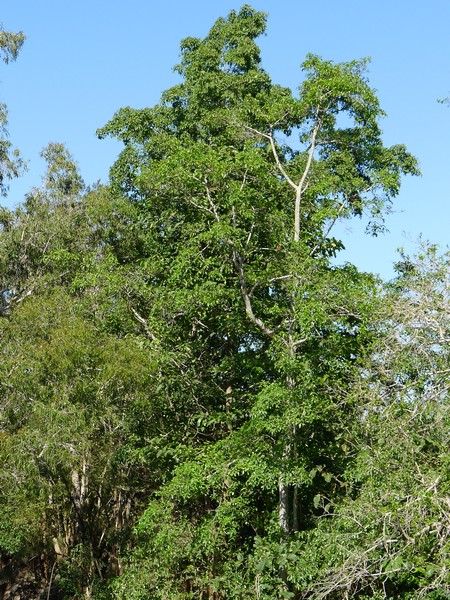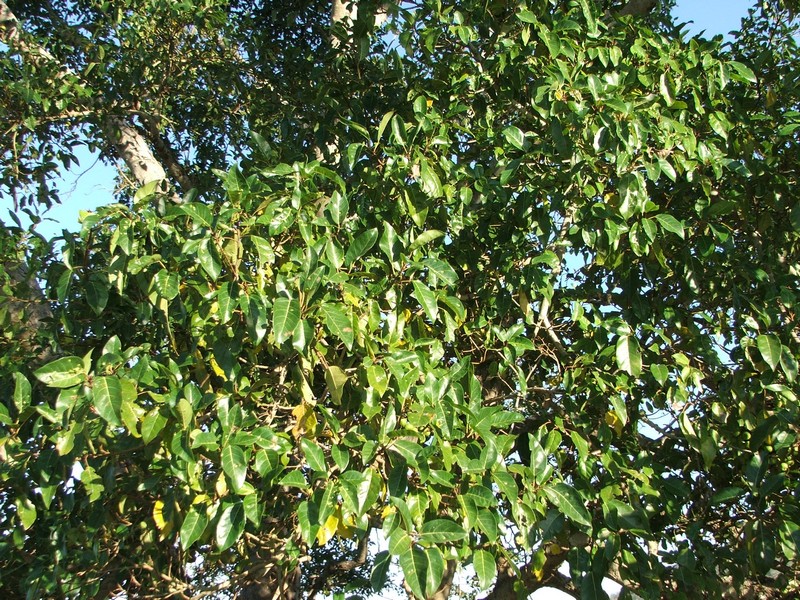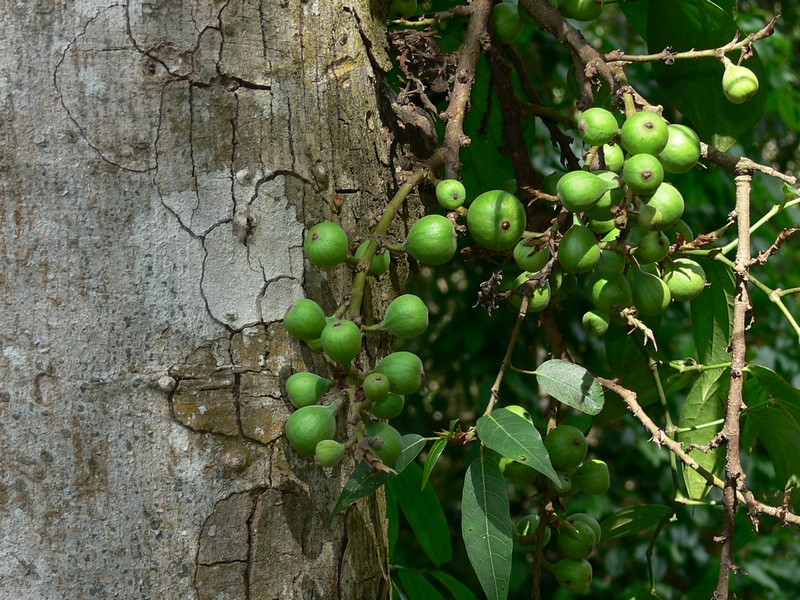Cluster fig
Ficus racemosa, Fam. Moraceae






A deciduous, large spreading tree with a stout buttressed trunk. All parts exude milky sap that turns brown. Aborigines used various parts for medicinal purposes and the trunks to make dugout canoes.
| Weed Category: | |
| Weed: | No |
| Form or habit: | Med tree, Large Tree |
| Family: | Moraceae |
| Leaf: | Simple Alternate Simple, alternate, ovate to lanceolate, 6-20x 4-8cm, are slightly hairy soon becoming hairless. The leaf stalk is 2-7cm long; persistent stipules 0.5-2cm. |
| Flower conspicuous: | Inconspicuous |
| Flower colour: | |
| Flower description: | Unisex flowers are enclosed in the fig. A small opening provides access, usually to one specific species of wasp, in which the female lays her eggs. Newly hatched wasps typically pollinate the figs as they travel to different fruit upon dispersal. |
| Fruit conspicuous: | Conspicuous |
| Fruit colour: |
Red |
| Fruit: | Fleshy |
| Fruit description: | Fleshy figs, borne in clusters on the trunk and main branches are globular or pear shaped, up to 4cm in diameter and red at maturity. |
| Habitat: | Gallery (riverine or riparian) forest, rainforest. |
| Distribution | From Cape York to as far south as Gympie, northern Western Australia, and Northern Territory and overseas. |
| Food source for: | Early settlers used the fruits to make jelly. Fruits are eaten by fruit eating birds and bats. Larval food plant for a range of butterfly and moth species. |
| Toxicity: | No toxicity known |
| Origin: | Australia |
| Notes: | |
| Information sources: | Melzer R. & Plumb J. (2007) Plants of Capricornia. |